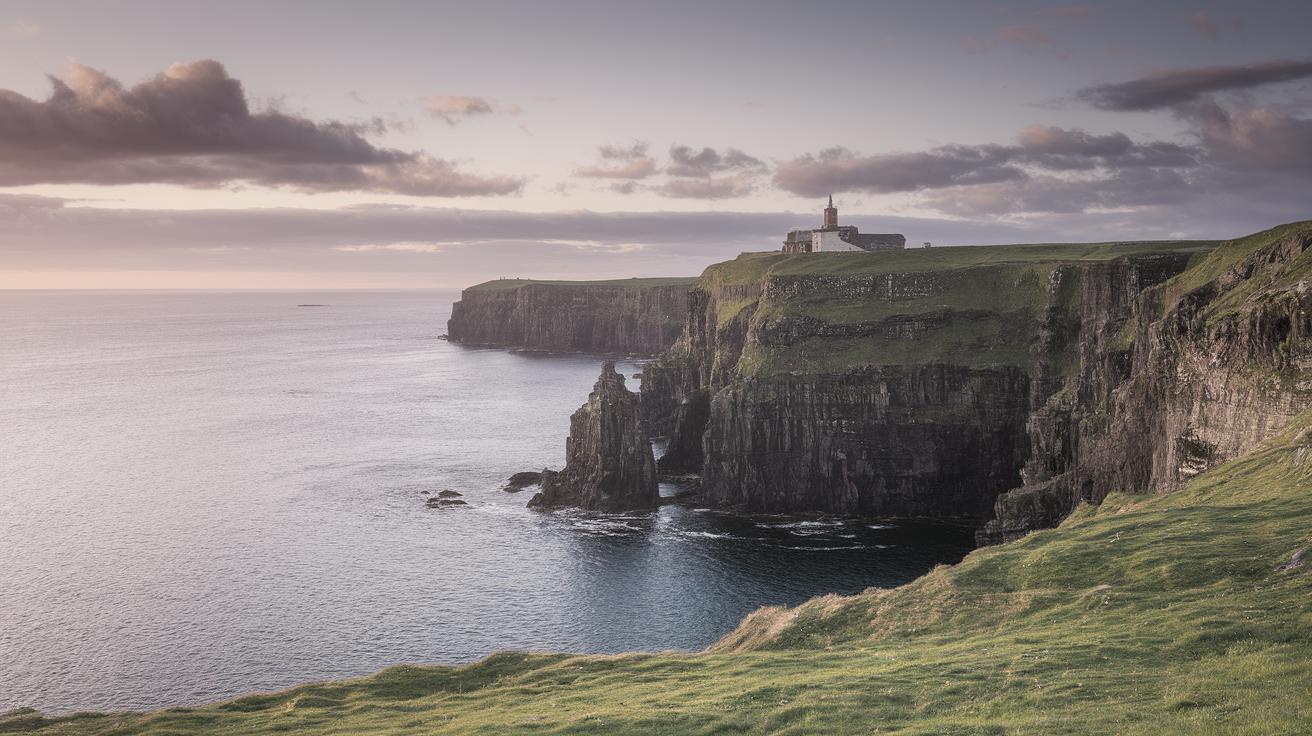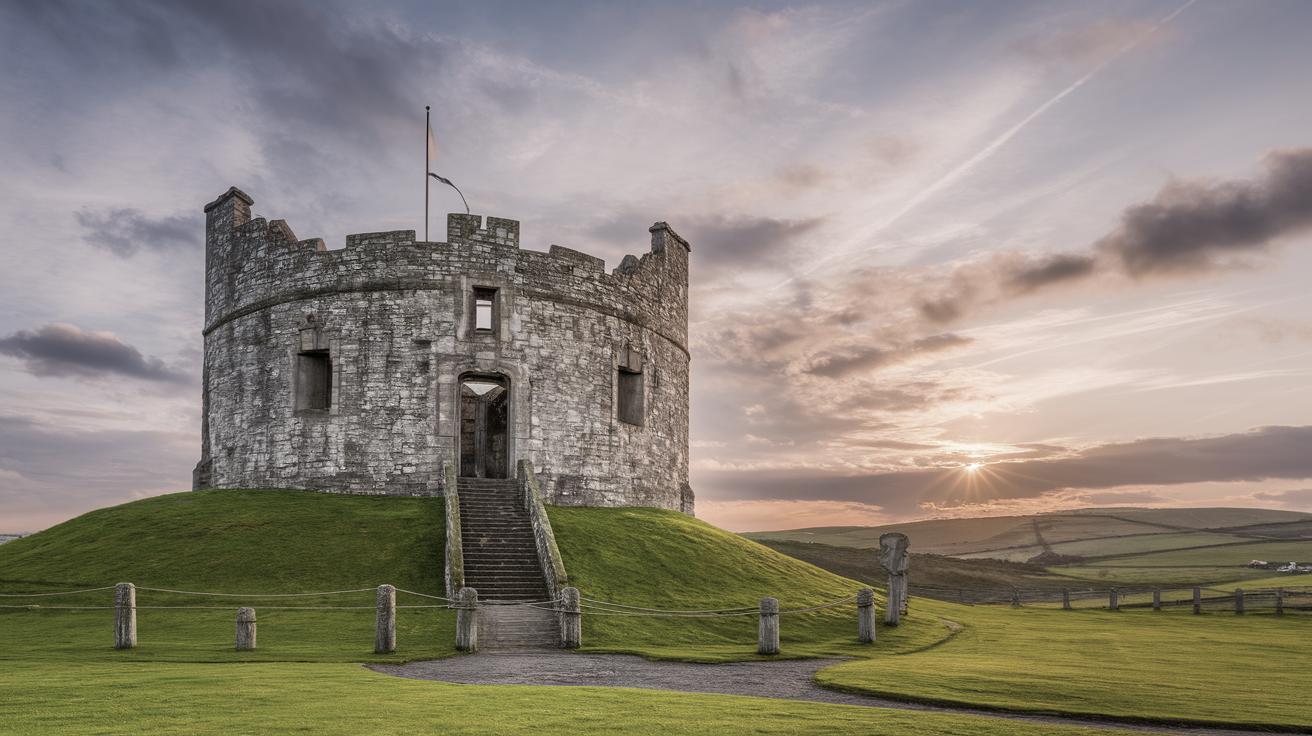Architectural Styles of Irish Buildings
Exploring the architectural heritage of Ireland unveils a fascinating blend of styles that reflect cultural, economic, and environmental influences. From rural cottages with thatched roofs to stately Georgian townhouses and medieval castles, Ireland’s diverse architectural landscape offers a rich tapestry for both historical insight and aesthetic appreciation. This post delves into various aspects of traditional Irish architecture, with a particular focus on the design elements of houses, the materials used in construction, and the timeless appeal of thatched roofing. We’ll examine how these elements come together to define the rustic yet resplendent charm that Irish buildings are renowned for.
Does the Museum have a traditional house on view to the public?
Many museums in Ireland take pride in preserving the cultural and architectural heritage of the country by maintaining traditional houses as part of their exhibits. Typically, these museums strive to present an authentic experience, allowing visitors to step back in time and experience the daily life of past Irish generations. A notable example is the National Museum of Ireland – Country Life, which showcases traditional Irish cottages complete with furniture and utensils from the period.
Irish Heritage Centres also play a crucial role in preserving these structures. They often house entire homesteads, including textile mills and barns, which have been meticulously restored or replicated. This ensures that the legacy of Irish architecture is not only preserved for future generations but also actively educates the public about various historical and cultural aspects associated with these buildings.
How many people lived in a typical house?
The population within a typical Irish home often depended on the time period and region. During the 19th century, it was common for extended families, sometimes encompassing three generations, to dwell within a single cottage. This communal living arrangement was partly due to economic necessities and partly due to traditional family structures in rural Ireland.
An average household often included parents, several children, and occasionally grandparents or other relatives. Due to the limited space, living conditions were crowded, which prompted adaptations in furniture and floor plans to maximize available space. This vibrant network of family life within a small space was a defining characteristic of traditional Irish homes.
How many rooms would a typical house have?
Traditional Irish cottages were quite modest in terms of room quantity. Typically, a cottage would have between two to four rooms. The focal point of these homes was the kitchen and living area, often combined into one open room featuring a large hearth used for cooking and heating.
The remaining rooms in these cottages were often small, with low ceilings to minimize heating needs. Bedrooms were minimal and sometimes shared by multiple family members. Over time, as economic conditions improved, some cottages evolved to include additional rooms such as parlors or sculleries, but the basic structure remained largely unchanged.
How much raw material is needed to thatch a roof?
To thatch a traditional Irish roof, a significant amount of raw material is required. The most commonly used thatching materials include water reed, wheat reed, and rushes. For a modest cottage, upwards of several tons of reed may be needed, depending on the size and pitch of the roof.
For instance, a standard cottage might require around 3,000 bundles of reed, with each bundle covering an area of approximately one square meter. The labor-intensive nature of sourcing and preparing these materials has historically made thatching a valued skill passed down through generations.
Is thatching still a common method of roofing a traditional style house?
While thatching is no longer the dominant roofing technique due to modern construction methods, it remains a respected craft in Ireland. There is a resurgence of interest in thatched roofs, not only for their aesthetic appeal but also for their sustainability and excellent insulation properties.
Some homeowners choose thatched roofs to maintain historical authenticity in renovation projects or to enhance the rustic charm of newly constructed homes. This growing appreciation ensures that thatching remains a viable profession and an integral aspect of Ireland’s architectural identity.
What determined the choice of building materials for a house?
The choice of building materials for traditional Irish houses was largely determined by the geographical availability of resources. In stone-rich areas, such as Galway and County Clare, limestone was prevalently used. Similarly, regions abundant in timber opted for wooden structures.
Climate also played a significant role. The persistent dampness of the Irish climate influenced the use of certain materials, like stone and lime, which were less susceptible to moisture damage. These materials were selected not only for their durability but also for their ability to blend seamlessly with the natural landscape.
What materials did people use to build their houses?
Traditional Irish homes were predominantly constructed from easily accessible local materials. Limestone, slate, and granite were commonly used in masonry walls and foundations, providing robust and weatherproof structures. The use of stone was dictated by its availability and the ease with which it could be worked into the necessary shapes.
In regions where timber was more accessible, wooden frameworks and beams were incorporated. For roofing, materials such as thatch were favored due to their excellent insulation properties. The combination of these materials created houses that were not only sturdy but also exuded a natural aesthetic that harmonized with the surrounding environment.
What other factors did people think about when building their house?
Ventilation, orientation, and accessibility were key factors considered during the construction of traditional Irish houses. Builders paid particular attention to the orientation of the house to maximize natural light and warmth, which was crucial in the cool Irish climate.
Moreover, the proximity to essential resources such as water sources, arable land, and communal pathways influenced the placement and layout of homes. The integration of functional elements such as barns or sheds was also carefully thought out, often reflecting the agricultural activities of the occupants.
What other materials were used for roofing houses?
Besides thatch, several other materials were employed for roofing in Ireland. Slate, harvested from local quarries, became a popular choice due to its durability and aesthetic appeal. Its waterproof nature made it a suitable choice for the perpetually damp Irish weather.
In addition to slate, turf and sod roofs were also utilized in certain regions. These materials provided excellent insulation and were an abundant natural resource. Regardless of the material chosen, each option reflected a deep understanding of the environmental conditions and resource availability unique to Ireland.
What roof styles do traditional Irish houses have?
Traditional Irish houses are often characterized by their distinct roof styles that have evolved through centuries. The most iconic is the thatched roof, a low-pitch design that helps the structure endure harsh weather while providing excellent insulation.
Gabled roofs, which feature steep angular profiles, are typical in areas susceptible to heavy rains and snowfall, helping to prevent water accumulation. As architectural styles advanced, hybrid roofs incorporating elements of both traditional and contemporary designs began to emerge, reflecting an adaptive approach to new building technologies and cultural influences.
What tools are used to thatch a roof?
The process of thatching a roof involves a variety of specialized tools. Thatching forks, which resemble pitchforks, are essential for manipulating and positioning the thatching materials. The legget, a tool with a flat, roughened surface, is used to dress and compact the thatch into place, ensuring a uniform and sturdy finish.
Other tools include the spar-hook, used for cutting and trimming thatching spars, and shears for cleanly cutting reed bundles to the desired length. Each tool in the thatcher’s arsenal is designed to accomplish specific tasks, reflecting the skill and precision involved in the craft.
What variations exist in thatched roofs?
While traditional thatched roofs are unified by their use of natural materials, regional variations exist across Ireland. These differences are primarily influenced by the types of thatching material readily available in the area, leading to variations in texture, color, and layering technique.
Some regions favor tightly clipped thatches, creating a neatly manicured appearance, while others utilize looser styles that emphasize natural form and texture. Decorative features such as ridge motifs or decorative ropes made from thatch are often added, reflecting regional tastes and individual craftsmanship styles.
Final Thoughts
| Aspect | Details |
|---|---|
| Museum Displays | Showcases authentic traditional Irish houses to preserve cultural heritage. |
| Occupancy | Typically housed extended families; integral to communal living structures. |
| Room Structure | Consisted of 2-4 rooms, with kitchen and living areas as focal points. |
| Thatching Material | Requires significant quantities, with thousands of reed bundles for a single roof. |
| Thatching Prevalence | Still appreciated for sustainability and authenticity despite modern alternatives. |
| Material Selection | Influenced by local resource availability and climate conditions. |
| Construction Materials | Mainly used stone, timber, and thatch for building resilient homes. |
| Construction Considerations | Factored in climate, resource proximity, and functional layout. |
| Alternative Roofing | Slate and turf provided durable, weather-resistant options. |
| Roof Styles | Included thatched and gabled roofs, adapted to environmental demands. |
| Thatching Tools | Involved specialized tools like forks, leggets, and spar hooks. |
| Roof Variations | Exhibited regional adaptations in material texture and decorative elements. |


